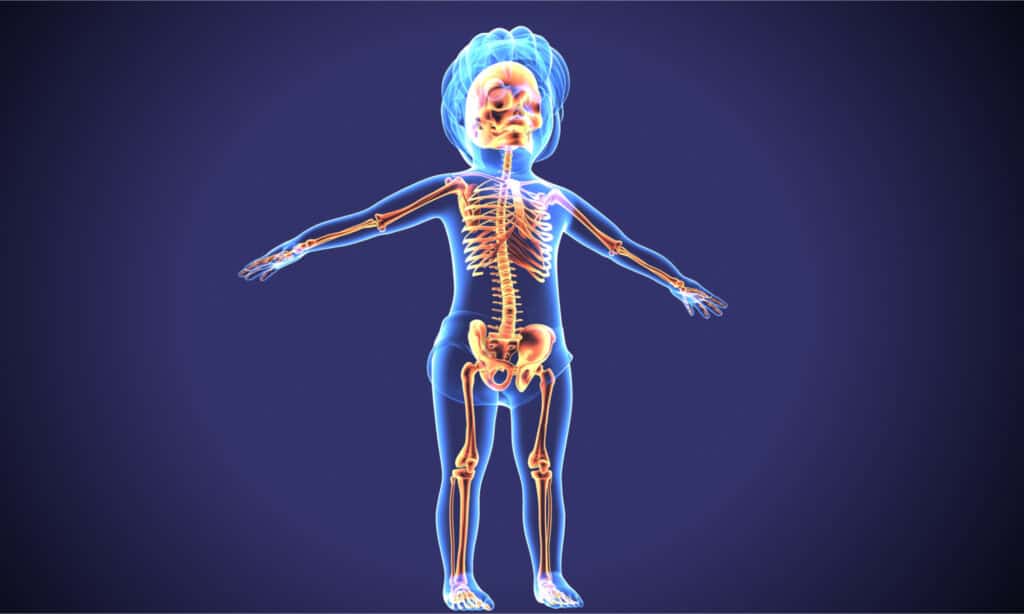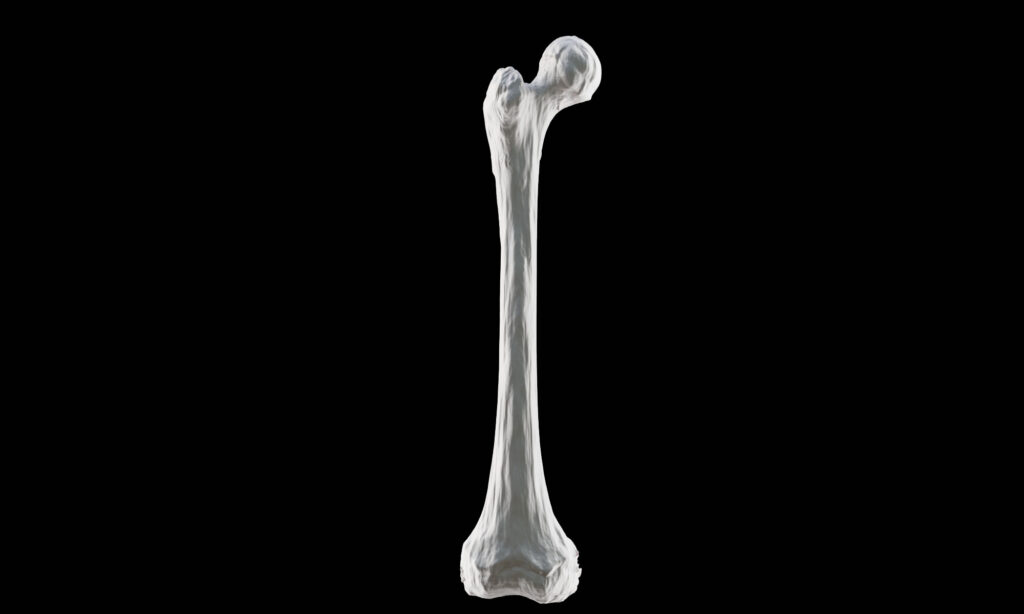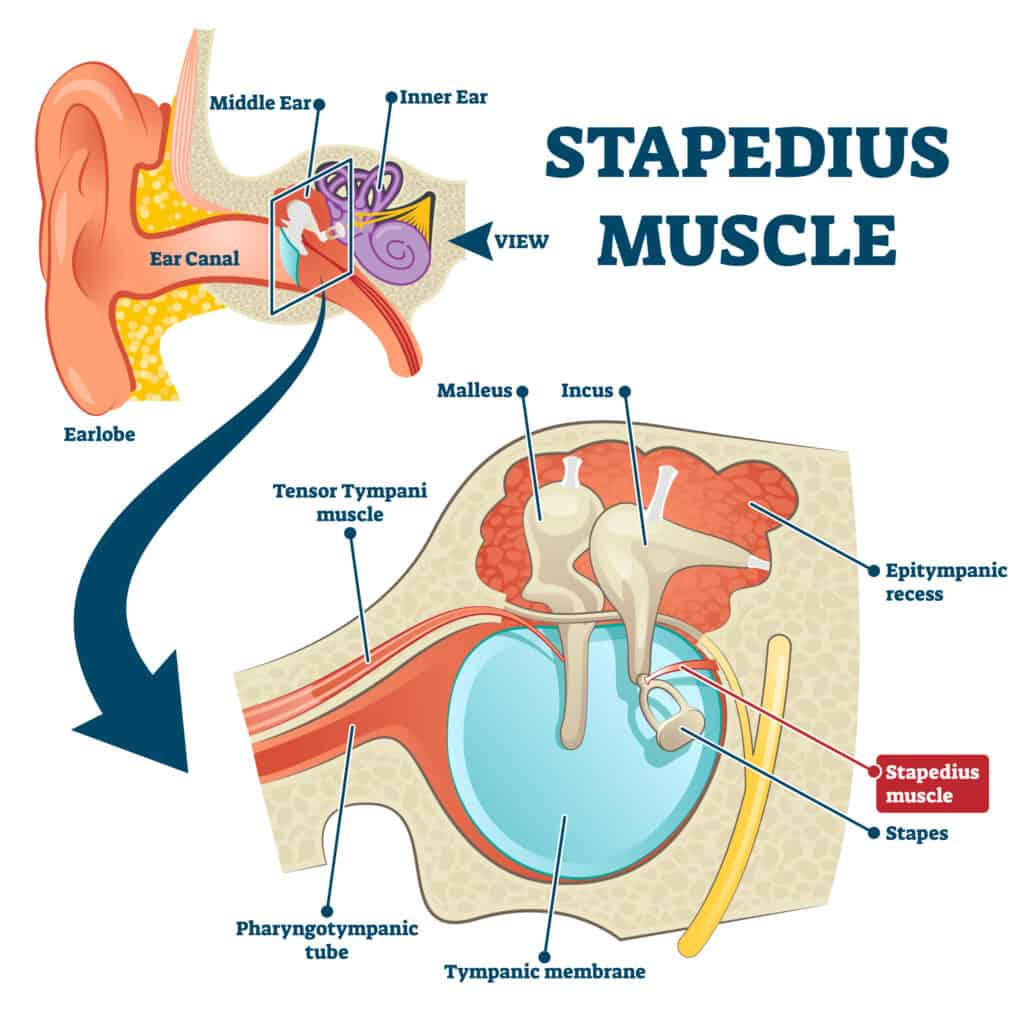An adult human body possesses 206 bones as part of the skeletal system. Some bones are very small, tiny enough to fit on the tip of your finger. Other bones are so large that damage to them can leave a human immobilized for months. In this article, we’re going to ask the question, what is the largest bone in the body?
We will take a look at which of these bones is the biggest, the purpose of bones in general, and even show you the smallest bones possessed by humans.
What is the Purpose of Bones in the Body?

Bones are crucial to keeping humans in shape and helping us stay upright.
©SpicyTruffel/Shutterstock.com
Bones serve many valuable purposes in the body. For one thing, they serve as the structural center of the body, providing shape to the human body. Together with the muscular system in the body, bones not only help humans achieve bipedal walking but also protect vital areas of the body.
For example, the ribcage allows humans to sustain serious blows to the chest area without harming the lungs or heart. The vertebrae protect the spinal cord in the same way.
Bones are far more intricate than we may think at first glance. Instead of being a static fixture once humans reach adulthood, bones are living tissues. In fact, they are organs in their own right. Bone marrow produces red blood cells, white blood cells, platelets, and more. These cells support the human immune system.
Thus, human bones are not merely a structural feature in the body. Instead, they are valuable organs. As a result, some people consider the skeleton to be the largest organ in the body. Yet, their apparent lack of interconnectivity of them has made many people recognize the skin as the largest organ in the body.
Bones are mostly made from collagen and calcium phosphate, allowing them to be flexible yet powerful. They do not break easily, but they can break. Furthermore, changes in bone density as people age can leave them far more open to skeletal injuries than in their youth.
How Do We Measure the Largest Bone in the Body?

By our measure, the largest bone is the longest.
©Life science/Shutterstock.com
There are two ways that we can measure the largest bone in the body. They include the longest bone and the one that has the greatest amount of mass. For our purposes, we’re going to list the bone that has the greatest length.
Fortunately, though, the same bone is both the longest and most massive in the human body. Thus, very little controversy exists about the decision to measure the bone in one way or another. The largest bone is the largest by every measure.
What’s the Largest Bone in the Body?

The femur is the longest bone that connects the hip to the leg.
©/Shutterstock.com
The femur is the largest bone in the body. This is the thigh bone that connects to the pelvis, and it keeps the body upright and allows bipedal locomotion to occur. The average length of the femur is about 16-19 inches depending on the individual’s height.
The femur is the longest, strongest, and heaviest bone in the entire body. It’s a good thing that’s the case, too. The femur is a very important structural bone that holds the weight of the upper body and allows humans to stand upright. The femur is such a strong, tensile bone. These qualities allow humans to stride without becoming destabilized.
Of course, the femur doesn’t do all this work alone. This bone works in conjunction with the muscular system of the body to accomplish our feats of walking and balance. The form of the femur is significant to its function. The size and strength of the femur make it the perfect attachment point for the strong muscles in our legs, hips, and knees.
Some Muscles Attached to the Largest Bone in the Body
The femur is the attachment point for several large muscles in the human body. These muscles include:
- Pectineus: a muscle that helps the thigh flex and rotate.
- Iliopsoas: a muscle group that connects the spine to the hips and legs while acting as the primary hip flexor.
- Sartorius: a muscle that abducts, flexes, and rotates the thigh originating at the hip point while also aiding the knee in its flexion.
- Quadriceps: a group of four large, strong muscles that help to extend the leg at the knee joint. The four muscles of the quadriceps include the rectus femoris, vastus medialis, vastus lateralis, and vastus intermedius.
- Hamstring: a group of three muscles in the leg that help extend the hip, flex the knee, extend the thigh, and rotate the leg when the knee is flexed. These muscles include the semitendinosus, the semimembranosus, and the biceps femoris.
These are just a few of the most important muscles that attach to the femur bone. As you can see, they are critical to bipedal walking, running, and standing without losing one’s balance.
What is the Smallest Bone in the Body?

The malleus, incus, and stapes work together to translate sound.
©VectorMine/Shutterstock.com
The smallest bone in the human body is called the stapes. This bone is sometimes referred to as the stirrup. It is a bone located in the middle ear of humans and some animals, and it helps to conduct sound vibrations, allowing them to travel to the inner ear.
The stapes is only about 2 to 3 mm in length, making it far smaller than the other bones in the body. However, this bone is one of three very small bones located in the human ear. The other two bones are called the malleus, meaning hammer, and the incus, meaning anvil.
They work together when sound waves enter the external ear canal and hit the eardrum, creating vibrations. On the other side of the eardrum is the malleus, which vibrates against another small bone called the incus. The malleus then transmits those vibrations to the stapes bone and into the inner ear, where the sound is processed.
Interestingly, the stapes has the smallest muscle in the human body attached to it. This muscle is called the stapedius, and its only purpose is to stabilize the stapes. This muscle measures about 1 mm in length.
The human body is a marvel. The various systems that work in conjunction to keep our bodies moving are a wonder to behold. Although we don’t often think of our bones as being complex, living things, it’s important to recontextualize them as organs that require proper nutrition and care to get the most out of them.
The photo featured at the top of this post is © /Shutterstock.com
Thank you for reading! Have some feedback for us? Contact the AZ Animals editorial team.







